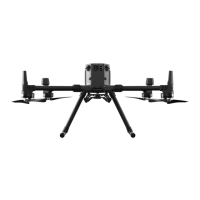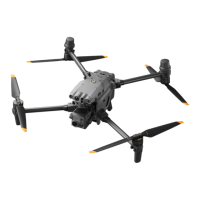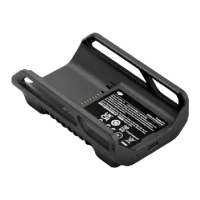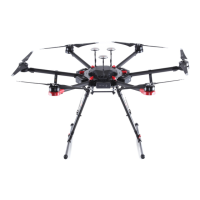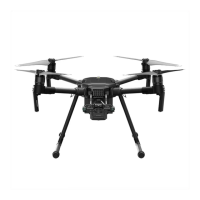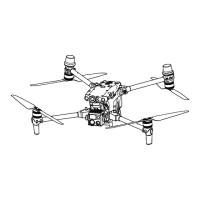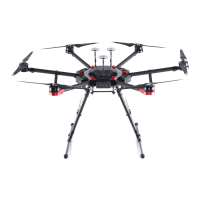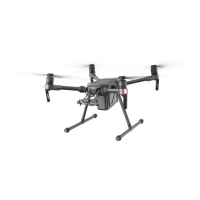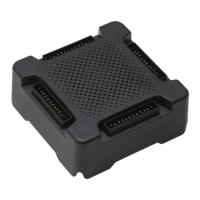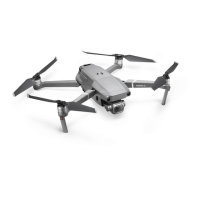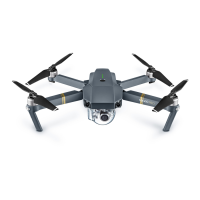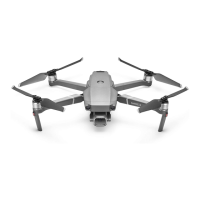MATRICE 350 RTK
User Manual
86
©
2023 DJI All Rights Reserved.
Fly with caution1
Top Bar
1. Back: Tap to return to the homepage of the DJI Pilot 2 app.
2. System Status Bar: indicates the aircraft flight status and displays various warning
messages. If a new alert appears during ight, it will also be displayed here and continue
ashing. Tap to view the information and stop the ashing.
3. Intelligent Flight Battery Level Indicator: the battery level indicator bar provides a dynamic
display of the remaining power of the current intelligent ight battery and the ying time.
Each battery state is indicated by a dierent color. When the battery level is lower than the
warning threshold, the battery icon on the right turns red, reminding the user to land the
aircraft as soon as possible and replace the batteries.
4. Flight Status:
a. The flight statuses include: standby, preparing to take off, ready to go, manual flight,
mission ight, pano in progress, Smart Track, returning to home, landing, forced landing,
and vision positioning.
b. When the aircraft is in vision positioning, standby, or manual ight status, the current
ight mode will be displayed, including: N-mode, S-mode, A-mode, and T-mode.
c. Tap to enter Preight Check view.
5. GNSS Positioning Status: displays the number of GNSS satellites. When the aircraft RTK
module is disabled, the RTK icon will turn gray; when it is enabled, the RTK icon will turn
white. Tap the GNSS positioning status icon to view the status of the RTK mode and GNSS
positioning.
6. Signal Strength: includes HD video link quality and remote controller link quality. Three
green dots indicate strong signals; two yellow dots for medium signal strength; and one red
dot for poor signal quality. If the signal is lost, the icon will display a disconnected status in
red.
7. Intelligent Flight Battery Level: displays the remaining battery level of the aircraft. Tap to
view battery level, voltage and temperature information.
8. Settings: tap to expand the settings menu to set the parameters of each module.
a. Flight Control System Settings: include flight mode switch, Home Point, return to
home altitude, maximum altitude, distance limit, sensor status, signal lost action, center
of gravity auto calibration, coordinated turn, and GNSS.
b. Sensing System Settings: include obstacle sensing switch, vision positioning switch,
and precision landing switch.
c. Remote Controller Settings: include stick mode, customizable button settings, and
remote controller calibration and linking.
d. Video Transmission Settings: include work frequency, channel mode, and video
output type.
e. Intelligent Flight Battery Settings: include battery information, smart return-to-home,
4 5 6 7 81 2 3
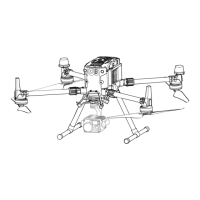
